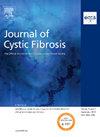浅宏基因组霰弹枪测序提高了囊性纤维化呼吸样本中病原物种的检测。
IF 6
2区 医学
Q1 RESPIRATORY SYSTEM
引用次数: 0
摘要
背景:慢性肺部感染和炎症是囊性纤维化(pwCF)患者疾病进展的重要因素。治疗方案主要基于使用基本培养方法从呼吸道样本中分离推定的致病病原体。虽然这一策略在CF的管理中具有很高的价值,但该方法非常耗时,并且经常错过检测更难以培养的致病微生物,包括分枝杆菌。在我们的概念验证研究中,我们评估了浅层宏基因组鸟枪测序在pwCF (n = 13)的痰、口咽和唾液样本中检测潜在感染致病菌的物种水平,并将其与临床培养结果和标准16S rRNA V4扩增子测序进行了比较。结果:与培养法相比,浅鸟枪测序法提高了呼吸道样本病原菌的检出率。特别是,浅层鸟枪测序可以检测出与CF相关的病原菌,特别是痰、口咽和/或唾液样本中的金黄色葡萄球菌、铜绿假单胞菌、嗜麦芽窄养单胞菌、木糖氧化无色杆菌、流感嗜血杆菌和分枝杆菌。值得注意的是,基于16S rRNA扩增子测序未检测到分枝杆菌。此外,我们的方法能够区分金黄色葡萄球菌和表皮葡萄球菌,以及流感嗜血杆菌和副流感嗜血杆菌。这在16S扩增子测序中是不可能的,但在临床环境中非常有价值。结论:提高对CF病原体和其他关键微生物组成员的检测以及对其在社区中的相对丰度的了解,可以提供更多关于患者疾病状况的知识,从而实现更个性化的医疗,并最终有利于患者护理。本文章由计算机程序翻译,如有差异,请以英文原文为准。
Shallow metagenomic shotgun sequencing improves detection of pathogenic species in cystic fibrosis respiratory samples
Background
Chronic infection and inflammation of the lungs contribute significantly to disease progression in persons with cystic fibrosis (pwCF). Treatment regimens are largely based on isolating the putative causative pathogen(s) from respiratory samples using basic culturing methods. While this strategy has shown to be highly valuable in the management of CF, the approach is time-consuming and often misses detection of pathogenic microbes that are more difficult to culture, including Mycobacterium spp.
Methods
In our proof-of-concept study, we evaluated shallow metagenomic shotgun sequencing to detect potential infection-causing pathogens at species level in sputum, oropharyngeal and salivary samples of pwCF (n = 13), and compared it to culture results from the clinic and standard 16S rRNA V4 amplicon sequencing.
Results
Shallow shotgun sequencing improved the detection of pathogenic species in respiratory samples compared to culture methods. In particular, shallow shotgun sequencing could detect pathogenic species associated with CF, specifically Staphylococcus aureus, Pseudomonas aeruginosa, Stenotrophomonas maltophilia, Achromobacter xylosoxidans, Haemophilus influenzae and Mycobacterium spp. in sputum, oropharyngeal and/or salivary samples. Notably, Mycobacterium spp. was not detected based on 16S rRNA amplicon sequencing. Moreover, our approach was able to distinguish S. aureus from S. epidermidis and H. influenzae from H. parainfluenzae. This is not possible with 16S amplicon sequencing, but highly valuable in a clinical setting.
Conclusions
The improved detection of CF pathogens and other critical microbiome members as well as insights into their relative abundance within the community, could provide more knowledge on patient’s disease status leading to more personalized medicine and ultimately benefit patient care.
求助全文
通过发布文献求助,成功后即可免费获取论文全文。
去求助
来源期刊

Journal of Cystic Fibrosis
医学-呼吸系统
CiteScore
10.10
自引率
13.50%
发文量
1361
审稿时长
50 days
期刊介绍:
The Journal of Cystic Fibrosis is the official journal of the European Cystic Fibrosis Society. The journal is devoted to promoting the research and treatment of cystic fibrosis. To this end the journal publishes original scientific articles, editorials, case reports, short communications and other information relevant to cystic fibrosis. The journal also publishes news and articles concerning the activities and policies of the ECFS as well as those of other societies related the ECFS.
 求助内容:
求助内容: 应助结果提醒方式:
应助结果提醒方式:


